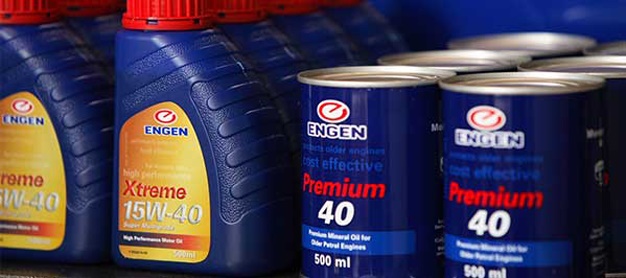Cape Town - From the social engagement ending with, well, a happy ending, we all need some form of lubricant in our lives. Your car’s engine is no different. Oil is what keeps it alive – and provides you with the pleasure of performance that you take for granted.
Given the times that we live in, understanding our how are cars work has become less of a thing, up to the point where the only thing the casual enthusiast cares about is looking good and driving fast.
'Oil is just as important'
It’s worsened by the fact that manufacturers increasingly shroud their products’ engines under square kilometres of non-user-serviceable plastic covers, the Fast & Furious franchise having long stopped being about cars (who remembers “Warning: danger to manifold!” – after which most inexplicably, only the floor panel flew off?) and the fact that motoring magazines no longer bother to take pictures of once-mechanic porn-ey engine bays.
Similarly, the art of building a naturally aspirated engine aired by side draught carburettors (and tuning them to within an inch of its life with just a stethoscope and a screw driver) has been gradually – you could argue “apocalyptically” – replaced by turbocharging, boosted by performance chips easily orderable over the internet, then installed and mapped by people with no mechanical knowledge except for a laptop and google.
What most petrolheads don’t consider – and despite his surname, one can safely add Vin Diesel to this mix – is that your car’s oil is as just as important as its turbocharger or those two canisters of nitrous oxide sitting where the back seat once was.
So why does my car’s engine need oil?
Engine oil exists to serve a variety of purposes, of which the reduction of friction and transference of associated heat through acting as a lubricating film between adjacent moving metal parts such as the crank, bearings, con rods, cylinders – even the turbocharger – is the primary.
Oils are highly complex substances and may be made from either petroleum (referred to as mineral oils) or non-petroleum (synthetic) based products. All oils are born as some form of a base stock after which a range of surface, performance and protective additives are added.
These can be further broken down into:
- Viscosity index improvers – to handle a wider range of temperature extremes
- Pour point depressants – lowers the freezing point
- Anti-wear additives – further prevents metal-to-metal contact
- Detergents – prevents sludging
- Oxidation and corrosion inhibitors – prevents oxidisation, condensation, rust and keeps the oil stable over time
- Defoamants – prevents foaming and cavitations
Wow. OK, you have my attention now. In what other ways does oil protect my engine?
With so much metal moving around, inevitably some particles will grind and dislodge during the break-in process, which is why some manufacturers still recommend an oil change after your new car’s first 1000km covered. These particles are particularly harmful should they find their way onto the cylinder bores, leading to accelerated engine wear and even failure if left untreated.
Thankfully, oil has the thankless job of washing away these particles and dumping them, along with equally nasty combustion soot – in the oil filter.
So how does the oil manage to reach all the hard to reach places?
That’s the challenge, isn’t it? Oil must be thin enough when it’s cold to run through every nook and cranny, but still be thick enough to provide a lubricative layer, yet be able to thicken to provide the required protection as demanded by a hot engine. This resistance to flow is called viscosity, and is critical to the both an engine’s wear rate and fuel efficiency: a thicker oil provides better protection, but requires more power – and hence fuel – to be pumped through the engine: not ideal. Of course, the opposite is also true.
If you’ve ever been brave enough to buy car oil yourself, this is the moment where you freeze up in front of the shelf. What do the numbers on the packaging mean?
Let’s take an example. A Golf 7 GTI runs on 10W40 oil. The “10W” indicates that the oil is able to reach a viscosity within a low temperature range (W stands for winter), while the 40 indicates viscosity at normal running temperature, measured on a scale ranging from -18 to 100 degrees centigrade, as predetermined by the Society of Automotive Engineers. The lower the number preceding the W, the higher the viscosity during cold winter morning starts. 5W or 10W oils are suited for regions where the minimum temperature rarely exceeds 0 degrees Celsius.
Why does oil deteriorate?
An engine is a torture chamber: it’s hot, it’s tight and there’s a hell of a lot of rubbing and exploding going on. As oil ages, it suffers thermal and mechanical degradation, owing to factors such as high RPM running, temperature extremes, the presence of contaminants, combustion by-products, molecular inequalities and trip lengths (short trips are the worst offenders as the engine never sufficiently warms up to burn away deposits in the oil).
Nowadays, most cars have an oil life monitor which informs the driver of the state of its oil. Synthetic oils outlast mineral oils, but cost more.
So which is best for my car?
Synthetic oil is superior to mineral oil in every way, ranging from stability to protection to resistance to thermal degradation. Because of this, it can prolong the years of service from your engine, too. If you run synthetic oil, it should even theoretically be possible to only change your car’s oil filter more often than the oil.
Today, 20 000km service intervals are not unheard of, and much of that is down to the constant improvements in oil technology. If however, your engine is older, the benefits of a cutting edge-oil may not be fully realised, not least the fact that it could remove particles of sludge which up to now have acted as seals from potential leaks.
Also note that while some oils are branded as synthetic, in truth they are blended part-synthetics with a mineral base: the giveaway is that they cost a lot less than the full-synthetic good stuff. But when in doubt, simply comply with your car manufacturer’s recommendations.
Is there anything else you can do to treat your engine oil any better? Oh yes. Your engine’s water reaches operating temperature a lot sooner, so do not be fooled into thinking that once the water gauge has moved to the middle, you can go medieval on the engine. And if you don’t know it yet, there no quicker way to destroy a cold engine than putting it under load. Patience is a virtue.
Any performance car worth its salt has an oil temperature gauge (sometimes in place of the water temp), which is the best indicator of when you can start chasing the red line. Waiting for the oil to warm is a painful, drawn-out process, but it’s always worth it. Think of it as foreplay with your engine.




 Publications
Publications
 Partners
Partners











